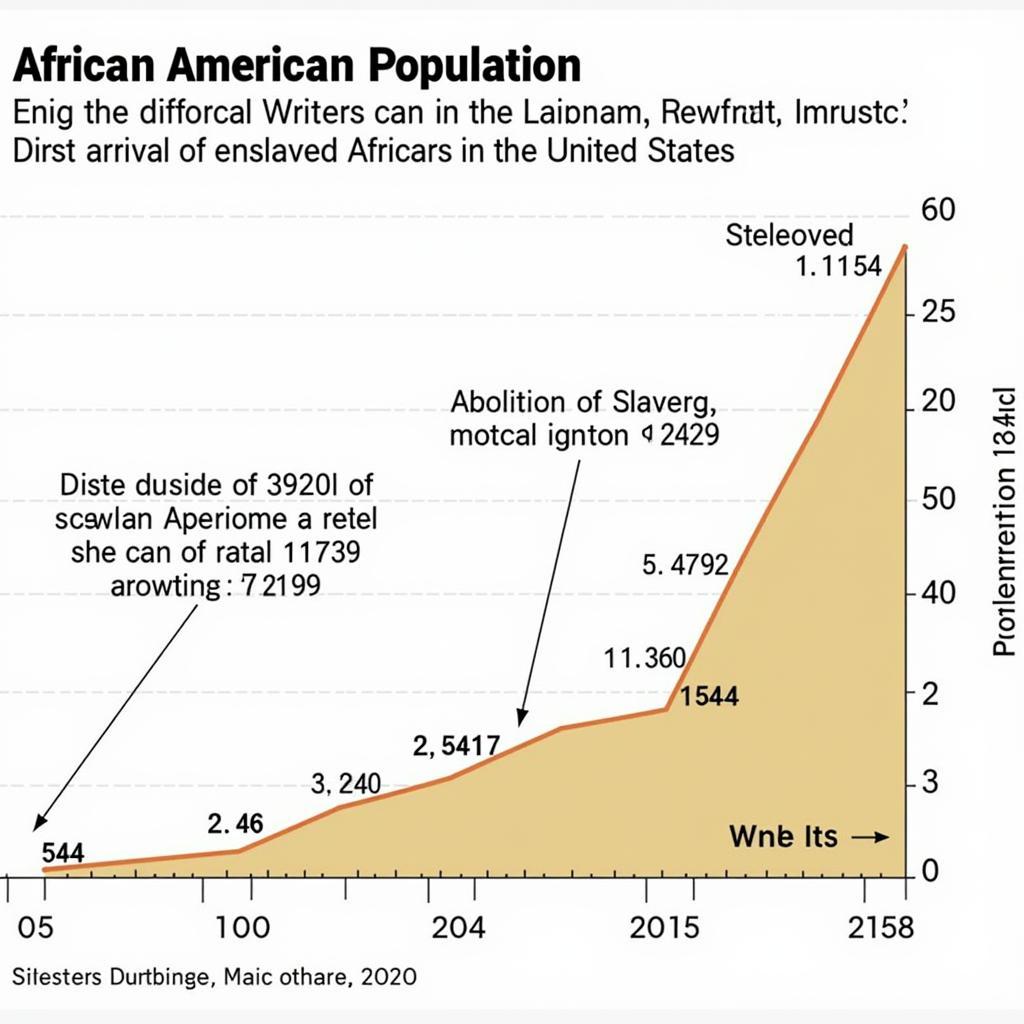African American Population in US Over Time
The African American population in the US has experienced significant growth and change over time, shaped by complex historical, social, and political forces. From the arrival of enslaved Africans to the ongoing fight for civil rights and equality, understanding this demographic evolution is crucial for grasping the fabric of American society.
A Journey Through History: Tracing the African American Population
The story of the African American population begins tragically with the transatlantic slave trade. Millions of Africans were forcibly brought to America, enduring brutal conditions and systematic dehumanization. By the 18th century, enslaved Africans constituted a significant portion of the colonial population, their forced labor fueling the burgeoning American economy. The abolition of slavery in 1865 marked a pivotal moment, but the fight for true equality was far from over.
After the Civil War, the African American population continued to grow, facing widespread discrimination and segregation. Jim Crow laws enforced racial segregation in the South, while subtle forms of discrimination persisted in the North. The Great Migration of the 20th century saw millions of African Americans move from the rural South to urban centers in the North and West, seeking better economic opportunities and escaping the oppressive Jim Crow South. This migration significantly impacted the demographic distribution of the African American population across the United States. The Civil Rights Movement of the mid-20th century, spearheaded by iconic figures like Martin Luther King Jr., challenged segregation and discrimination, leading to landmark legislation like the Civil Rights Act of 1964 and the Voting Rights Act of 1965.
 African American Population Growth from 1619 to 2023
African American Population Growth from 1619 to 2023
Key Demographic Trends: African American Population in US Over Time
The US Census provides valuable data for tracking the African American population over time. These data reveal key trends, including steady population growth, changing geographic distribution, and evolving socioeconomic indicators. Understanding these trends helps paint a more complete picture of the African American experience in the US.
What are some of the key demographic shifts in the African American population? Increased urbanization, changing age demographics, and increasing educational attainment are just some of the key demographic trends observed within the African American community. These shifts reflect the ongoing social and economic progress, as well as the persistent challenges that remain.
For example, the African American style of speaking has been a subject of much academic interest. Researchers analyze the evolution, regional variations, and cultural significance of African American Vernacular English (AAVE).
Challenges and Triumphs: The Ongoing Story
Despite the progress made, the African American community continues to face systemic challenges, including disparities in wealth, healthcare, and education. Understanding these challenges is essential to working towards a more equitable future. However, the story of the African American population is also one of resilience, innovation, and cultural richness. From music and art to literature and politics, African Americans have made invaluable contributions to American culture.
“Understanding the historical context of the African American experience is crucial for addressing present-day inequalities,” notes Dr. Anika Johnson, a leading historian specializing in African American studies. “We must learn from the past to build a more just and equitable future.”
The history of African American female slaves is a particularly poignant reminder of the hardships endured. It’s important to remember and honor their strength and resilience. Similarly, the dark history of African American lynching must be acknowledged and understood as part of the broader struggle for racial justice.
Conclusion
Examining the African American population in the US over time reveals a complex narrative of struggle, resilience, and ongoing progress. Understanding this history is vital for fostering a more inclusive and equitable society. The continued study of the African American Population In Us Over Time is critical for addressing current societal issues and shaping a future where equality and justice prevail.
FAQ
- What was the Great Migration?
- What is the significance of the Civil Rights Act of 1964?
- What are some key demographic trends in the African American population today?
- What are some of the major challenges facing the African American community?
- How has the African American population contributed to American culture?
- What resources are available for learning more about African American history and demographics?
- Where can I find reliable data on the African American population in the US?
You might also be interested in learning how many African countries there are, or reading about the fascinating African buffalo wild animals africa.
If you need further assistance, please contact us: Phone: +255768904061, Email: kaka.mag@gmail.com, or visit us at: Mbarali DC Mawindi, Kangaga, Tanzania. We have a 24/7 customer support team.
